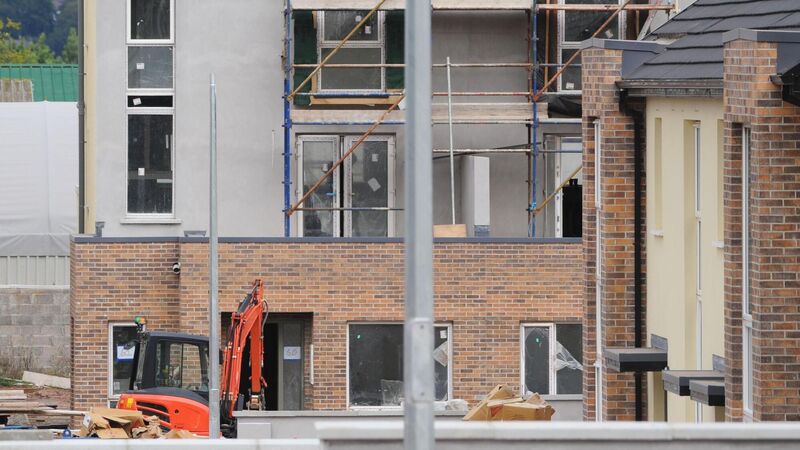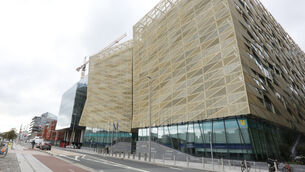John Fahey: Construction sector will struggle to match last year’s residential units

Latest forecast from the Central Bank of Ireland is that housing completions could fall to 27,000 units this year. Picture Denis Minihane.
A notable feature of the Irish housing market over the past 12 months has been a clear decelerating trend in the rate of increase in prices.
This is against the backdrop of greater supply in 2022 and a rising interest rate environment. The most recent official CSO data showed that house prices nationally fell by 0.4% in February. This followed a 0.6% monthly fall in January.
While some weakness in prices is not unusual in the early part of the year, it marked the first time since late 2019/early 2020 that prices fell for two consecutive months. In year-over-year terms, the pace of growth slowed to 5% in February, the lowest rate since April 2021. This compares to a rate of 15% in the February-March 2022 period.
There has been a big jump in new housing supply over the last year. The number of house completions totalled just under 30,000 units in 2022, a 45% increase on 2021 levels. In reality, some of last year’s total was probably 2021 supply that was delayed coming on stream by covid-19. Indeed, the pandemic saw the uptrend in new housing supply stall at around 21,000 units per annum from 2019 to 2021. More recently, data on new supply for the opening quarter of 2023, show that the four-quarter running total rose further to around 31,000 units.
However, forward-looking supply indicators suggest the construction sector will struggle to match last year’s level of residential construction of 30,000 units. Commencements have been running at around 27,000 units on a 12-month cumulative basis since last September. This is down on the 30,000 to 35,000 range evident in the period from September 2021 to May 2022.
Meanwhile, the housing component of the construction PMI has been in contractionary territory since October of last year. Elsewhere, the total number of dwelling units granted planning permission in 2022 amounted to 34,177, a fall of 20% when compared to 2021, with a big decline in apartments in particular.
The economy needs at least 30,000 new units to be built per annum, based on underlying demographics. Given that new supply has been running well below this level over the past decade, it means that significantly more than 30,000 units are required to be built on an annual basis to meet yearly demand as well as the pent-up demand from years of under-supply.
Higher building costs, shortages of workers, increased uncertainty regarding the general macroeconomic outlook, rising interest rates and delays in the planning process are major headwinds impacting future supply. Government policy is very much focused on boosting housing supply. However, the latest forecast from the Central Bank of Ireland is that housing completions could fall to 27,000 units this year.
Supply and demand dynamics will continue to be the key influence on the trajectory of housing prices. On the demand side, the continued rise in interest rates will act as a headwind to homebuyer activity and exert some downward pressure on prices. On the other hand, the supply shortfall is set to persist.
Overall, we are likely to see a further moderation in annual house price growth over the remainder of 2023. We would not expect to see a continuation of the outright falls, though, reported in the CSO data for January and February, with the trend from ‘asking prices’ data on property websites suggesting that prices are levelling off.












